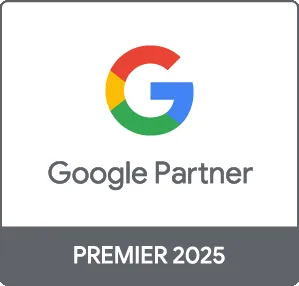Understanding Google Ads Marketing
Google Ads marketing is essential for businesses looking to enhance their online visibility in South Africa. In 2025, an effective Google Ads strategy can dramatically increase your reach, helping you connect with a larger audience and drive significant online traffic.
What is Google Ads?
Google Ads is a pay-per-click (PPC) advertising platform that allows businesses to display ads on Google's search results pages and other affiliated sites. With targeted keywords, you can ensure that your ads reach potential customers actively searching for your products or services.
Benefits of Google Ads Marketing
- Immediate Results: Unlike SEO, which can take time to show results, Google Ads can deliver traffic almost instantly.
- Targeted Advertising: Google Ads allows for precise targeting, reaching audiences based on demographics, location, interests, and search behavior.
- Measurable Performance: With Google Ads, you can track your campaign’s performance in real-time, allowing for data-driven adjustments.
Setting Up Your Google Ads Campaign
- Define Your Goals: Before launching a campaign, determine what you aim to achieve, whether it’s brand awareness, lead generation, or sales.
- Conduct Keyword Research: Use tools like Google Keyword Planner to identify relevant keywords that your target audience is searching for.
- Create Engaging Ads: Write compelling ad copy that entices users to click through. Highlight your unique selling points.
- Set Your Budget: Decide on a daily or monthly budget and adjust your bids based on performance and competition.
- Monitor and Optimize: Regularly check your campaign performance and make necessary adjustments to improve results.
Understanding Cost and Pricing
The cost of Google Ads can vary widely based on factors such as industry competitiveness and targeted demographics. In South Africa, businesses typically see costs ranging from ZAR 5 to ZAR 25 per click, but these rates can fluctuate.
| Service | Description | Typical Cost (ZAR) |
|---|---|---|
| Search Ads | Text ads that display on search result pages. | 5-25 per click |
| Display Ads | Visual ads appearing on websites within the Google Display Network. | 1-10 per click |
| Video Ads | Ads that appear before, during, or after YouTube videos. | 5-30 per view |
Best Practices for Google Ads Marketing
- Use Ad Extensions: Utilize ad extensions to provide additional information to potential customers, such as location and contact details.
- Geographic Targeting: Only show your ads to users in specific geographic locations to enhance relevance.
- Regularly Review Negative Keywords: This prevents your ad from displaying for irrelevant searches, saving costs and improving ROI.
Tracking and Measuring Success
Utilize Google Analytics along with Google Ads to track conversions, user behavior, and traffic sources, delivering insights into your ad effectiveness and areas requiring improvement.
Conclusion
In the competitive landscape of South Africa’s online marketplace, Google Ads marketing can significantly enhance your business's visibility and customer acquisition. By following best practices and continually optimizing your campaigns, you can achieve remarkable results and realize a strong return on investment.





